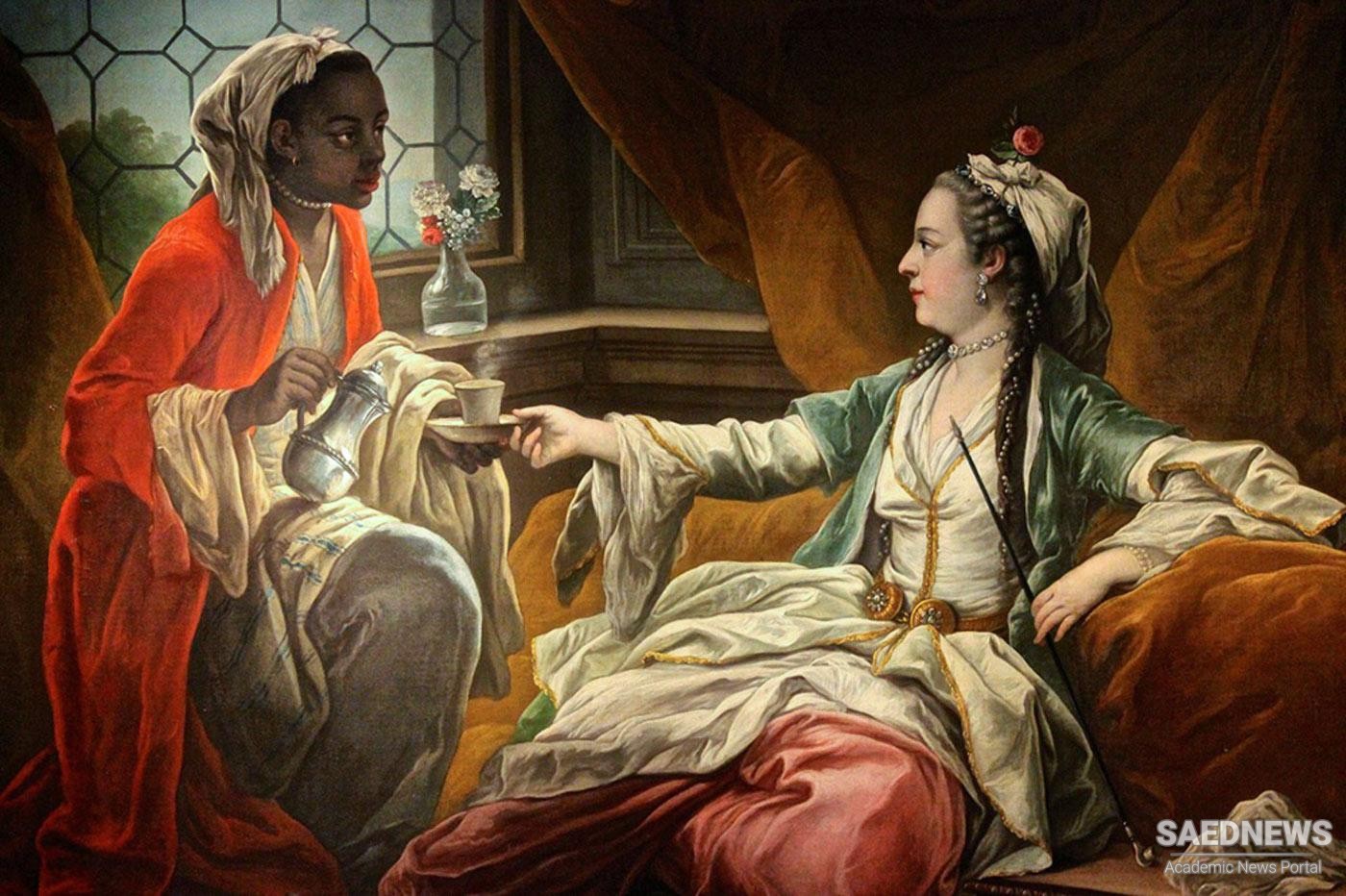Berezin invites his readers to follow him, the “invisible” observer, into the highlanders’ houses and into their lives, which are presented as if they were exhibited for the curious scrutiny of the learned traveler “in a gigantic open museum.” His use of a telescope is also symbolic: he sees them but cannot himself be seen. Another author, Vasilii Borozdna, also admits to the use of a telescope in order to gaze into neighboring houses: he is primarily interested in seeing (and describing) uncovered women. Nikolai Murav’ev openly tells the women from the harem of a Shahzadeh who used to come to his garden that he has used a telescope to look at them from his house.
Another Russian traveler, E. Belozerskii, begins his description with the impression a Persian city makes on him, and then proceeds to picture the interior of a house: There is nothing sadder than Persian cities. This is partly so because of the narrow streets, but the main reason is undoubtedly the architecture of the houses: from the outside they look like boxes made out of bricks dried in the sun. Through a small door you go into an open court, which in the houses of the wealthy usually has a small garden and a pool with water. All those houses I have seen were one-storied, unless we take into account the underground floor, the zir-i-zamin. . . The windows of a house are of the same size as its doors, and are usually made of small many-colored pieces of glass, which are usually dirty. There is also an andarun, the women’s quarters . . . The men’s quarters are called mardaneh.
For the numerous servants there is usually a special room, rather dirty. In the houses of the well-to-do the floor is covered with thick felt, over which in the middle of the room is placed a carpet which does not reach the walls; near the walls . . . motley cotton cloth, blue and white, is spread. Nobles have carpets covering the whole floor. In poor houses, the clay floor is not covered at all, and only a small mat is placed for sitting on. . . . It feels empty and uncomfortable in Persian rooms, since there is no furniture there: neither table nor chairs, nor cupboard, nor a single nail, nor a single hook – it is absolutely empty. However, in the corners are big packages; those are beds and pillows, rolled in tubes and left there all day long till night, when they are needed again. There are only niches in the walls of a room, which are shaped like windows, which sometimes have two rows where various things, jugs for water and big cups for water . . . are placed.


 Orientalist Domination and Colonialism
Orientalist Domination and Colonialism














































